Introduction
Before strategies, tactics, and grandmaster plans come into play, every game of chess begins with the same foundation: chess pieces. There are 32 chess pieces on the board at the start – 16 for white and 16 for black – each with its own name, movement pattern, and relative value. From the powerful queen to the modest pawn, these pieces shape the flow of battle, acting as attackers, defenders, and support units.
Understanding how the pieces move and what they are worth is essential for anyone learning chess. It not only helps beginners make smarter trades but also builds the foundation for deeper strategies later on. Mastering the names, moves and values of chess pieces is where the journey into the world of chess truly begins.
The Starting Army: 16 Chess Pieces Per Side
Every player begins with the same lineup of 16 pieces, arranged neatly on the first two ranks of the board. Here’s the full set:
- 1 king – the piece you must protect at all costs.
- 1 queen – the most powerful attacker.
- 2 rooks – strong long-range towers.
- 2 bishops – diagonal controllers.
- 2 knights – tricky jumpers shaped like horses.
- 8 pawns – the foot soldiers guarding the rest.
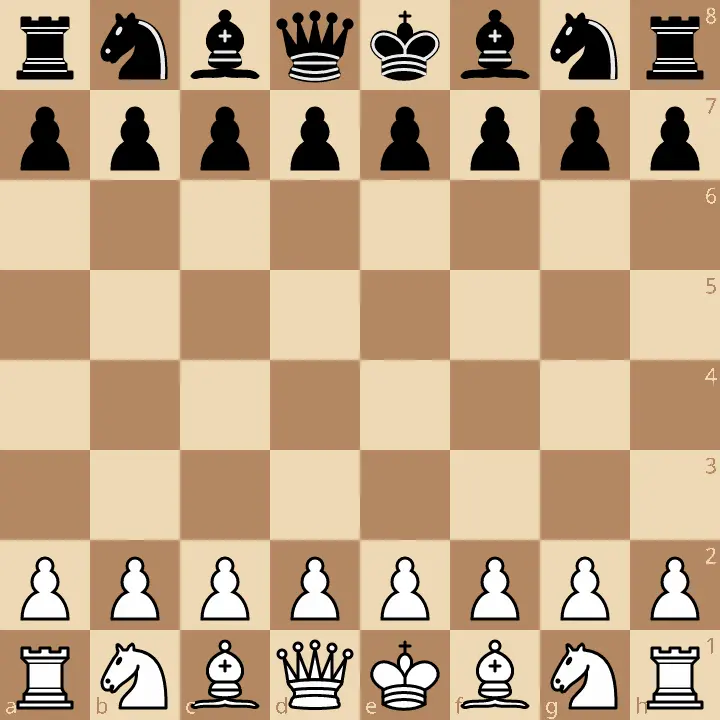
In the starting position, the major and minor pieces (king, queen, rooks, bishops, and knights) sit on the first rank, while the Pawns form a protective wall on the second rank. This setup is identical for both white and black, creating perfect symmetry before the first move is made.
Values of Chess Pieces
In chess, every piece has a point value that represents its relative strength. These values help players decide when an exchange is good or bad. For example, trading a bishop (3 points) for a rook (5 points) is usually a favorable exchange.
- Standard point values:
- Pawn = 1
- Knight = 3
- Bishop = 3
- Rook = 5
- Queen = 9
- King = infinite (cannot be traded — losing the King means losing the game)
Short-Range vs. Long-Range Pieces
- Short-range pieces (knights, pawns, king) cover only a limited area at once. Their power depends on being close to the action.
- Long-range pieces (bishops, rooks, queen) can sweep across the board and influence multiple squares from a distance, making them especially strong in open positions.
Why Values Are Relative
Point values are guidelines, not laws. A knight might be worth 3 points on paper, but in a closed position full of pawns, it can outperform a bishop. Likewise, a rook might be stuck behind its pawns and play worse than a knight. Context – such as piece activity, coordination, and king safety – always matters more than the raw number.
Meet the Chess Pieces (Names, Moves, and Values)
Let’s look at each piece in detail, including how it moves, its value, and special tips to use it effectively.
♔ The King: Infinite Value & Castling
- How it moves: One square in any direction.
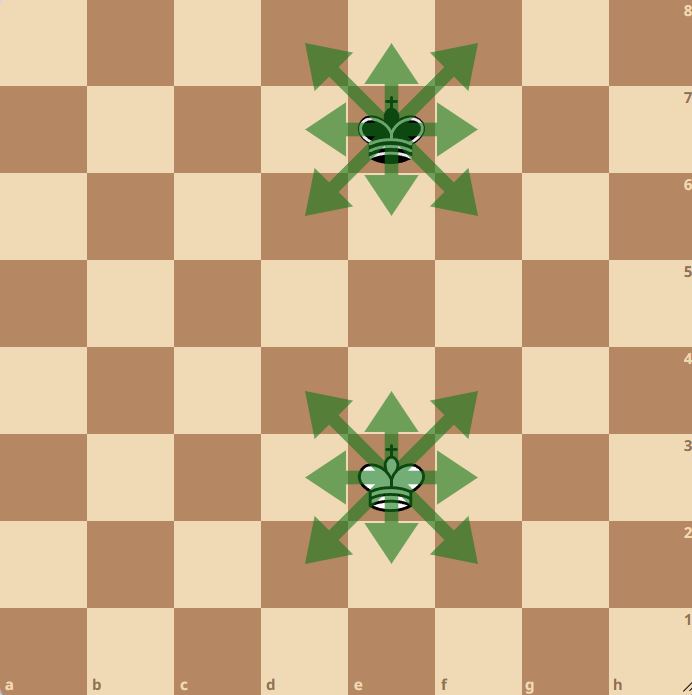
- Point value: Infinite – the king cannot be traded. If checkmated, the game is over.
- Special rule: Castling (a move that lets the king and rook move together for safety and development).
- Key tip: Keep your king safe in the opening and middlegame. In the endgame, bring it closer to the action.
♕ The Queen: Powerhouse of 9 Points
- How it moves: Combines the power of the Rook and Bishop – moves any number of squares in straight lines (ranks, files, diagonals).
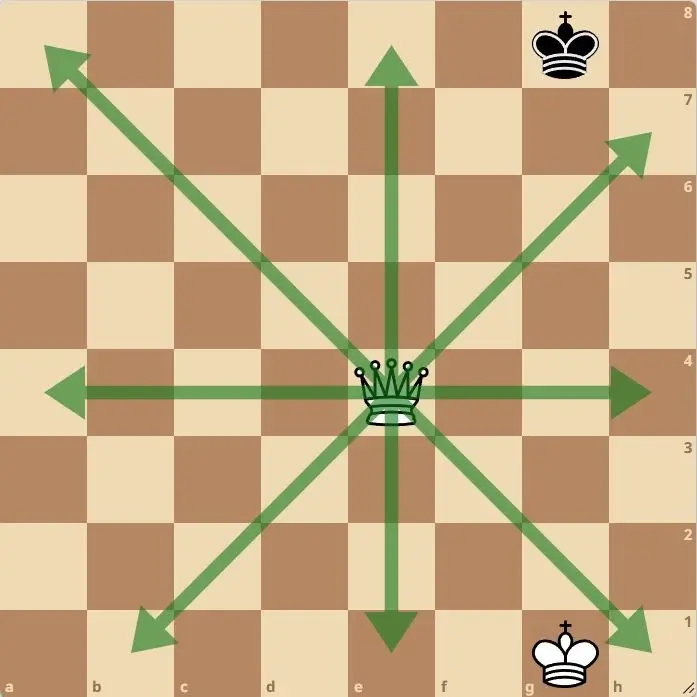
- Point value: 9
- Special rule: None.
- Key tip: The queen is strongest when coordinated with other pieces – don’t bring her out too early, or she can become a target.
♖ The Rook: Strong Tower Worth 5 Points
- How it moves: Any number of squares along ranks and files (horizontally or vertically).
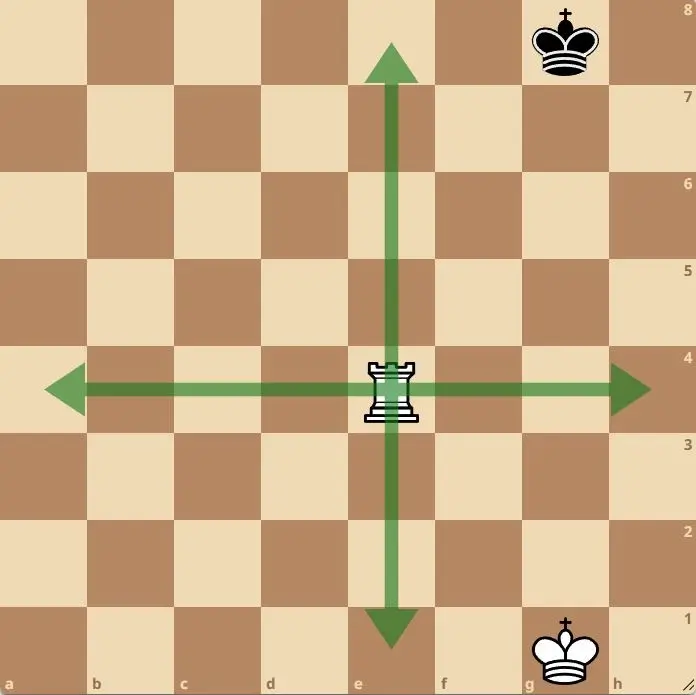
- Point value: 5
- Special rule: Works with the king in castling.
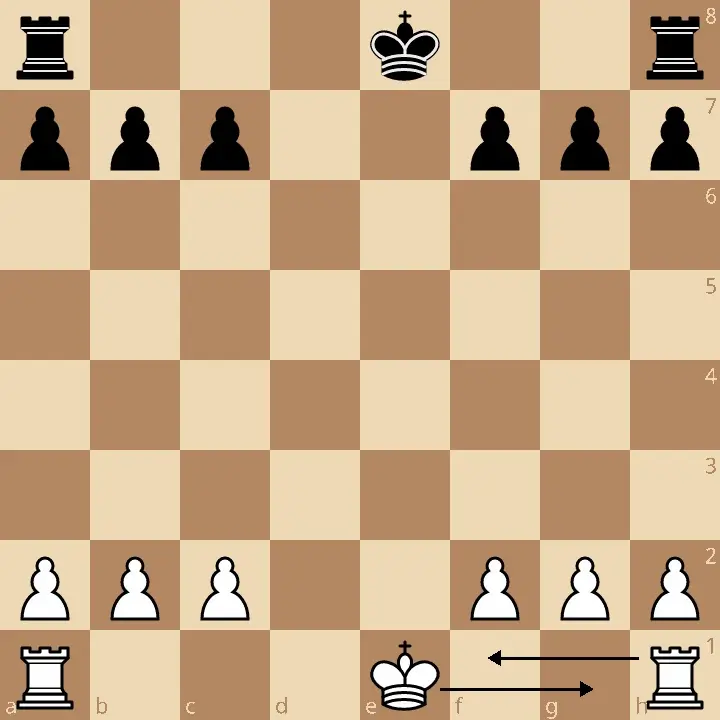
- Key tip: Rooks love open files and the 7th rank (where they can attack enemy pawns and restrict the opposing king).
♗ The Bishop: Long-Range Diagonal Worth 3 Points
- How it moves: Any number of squares diagonally.
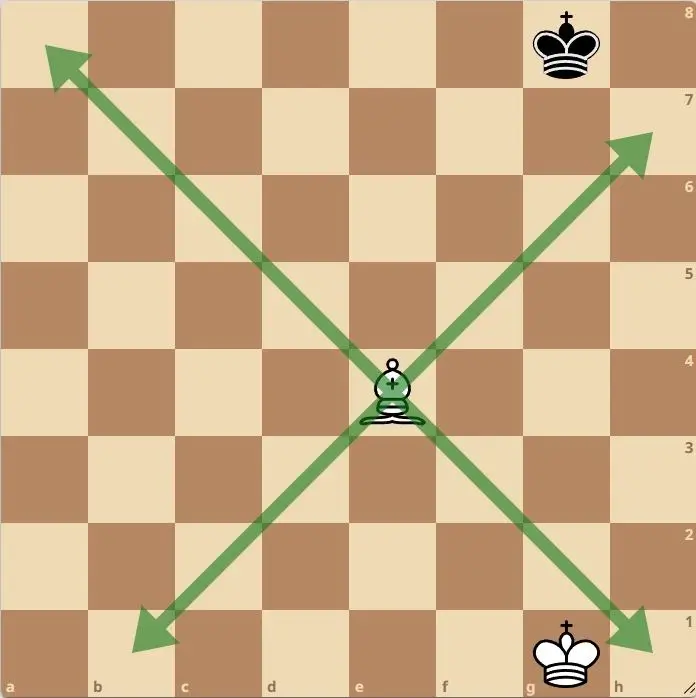
- Point value: 3
- Special rule: Each bishop is stuck on either light or dark squares for the whole game.
- Key tip: Bishops shine in open positions where pawns don’t block their diagonals. A pair of bishops working together can be very powerful.
♘ The Knight: The Trickster Horse Worth 3 Points
- How it moves: In an “L-shape”: two squares in one direction and then one square perpendicular. Knights can jump over other pieces.
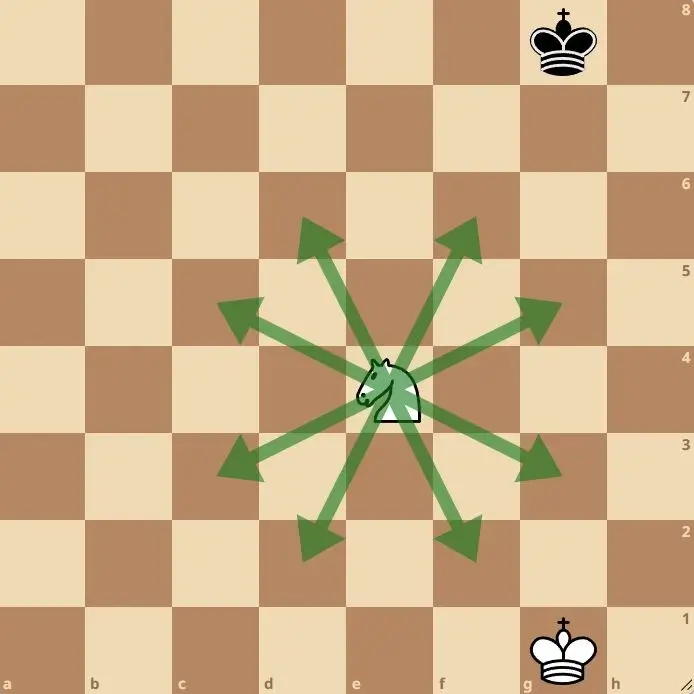
- Point value: 3
- Special rule: Only pieces that can leap over others.
- Key tip: Knights are strongest in closed positions and when placed on “outposts” (squares that can’t be attacked by enemy pawns).
♙ The Pawn: The Humble Soldier Worth 1 Point
- How it moves: One square forward (two squares from its starting position). Captures diagonally.
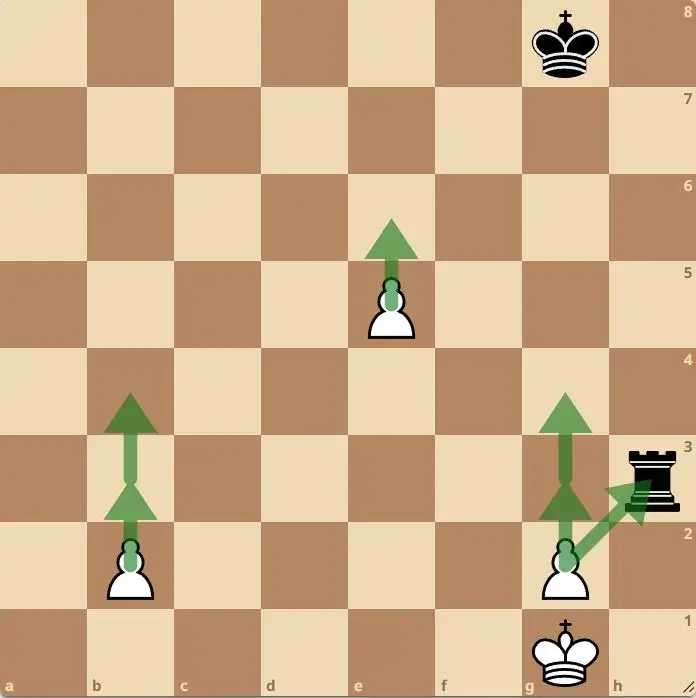
- Point value: 1
- Special rules: En passant capture and promotion.
- Key tip: Pawns are the “soul of chess.” Use them to control the center, support pieces, and create paths for promotion.
Special Moves You Should Know
Chess isn’t just about moving pieces from one square to another – some pieces have special moves that can change the course of the game. Here are the three you should know:
Castling (King + Rook)
Castling is the only move in chess where you move two pieces at once: the king and one of your rooks. It allows the king to move to safety while simultaneously bringing the rook into play. To learn more about this special rule, check out my blog post on castling.
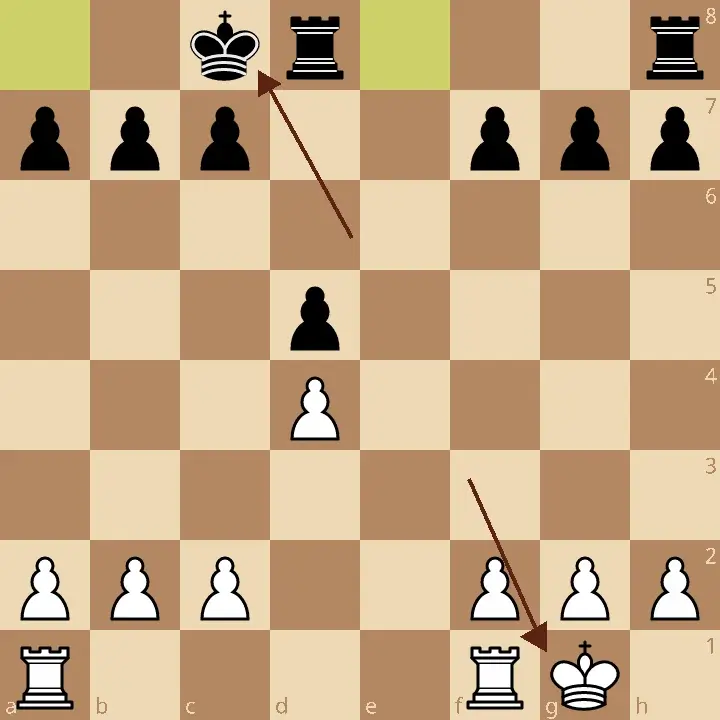
En Passant (Pawn Capture)
En passant is a special pawn capture that happens under very specific conditions. If an opposing pawn moves two squares forward from its starting position and lands next to your pawn, your pawn can capture it diagonally – but only on the very next move. It’s a rare but powerful tactic that can prevent a pawn from advancing too easily. To learn more about this special rule, check out my blog post on en passant.
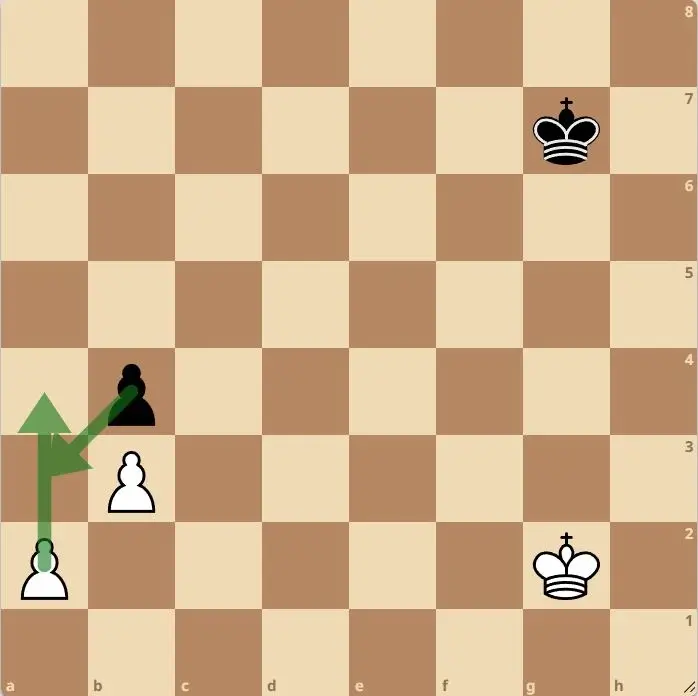
Promotion (Pawn Becomes a Stronger Piece)
When a pawn reaches the far side of the board, it can be promoted to any piece except the king – usually a queen, rook, bishop, or knight. This transformation can dramatically shift the balance of power, especially in the endgame. To learn more about this special rule, check out my blog post on what happens when a pawn reaches the other side of the board.
Why Knowing the Value of Chess Pieces Improves Your Game
Understanding the values of chess pieces is more than memorizing numbers – it directly impacts your decision-making and strategy.
- Helps you decide which exchanges are good or bad: Knowing that a rook (5 points) is worth more than a bishop (3 points) helps you trade pieces wisely.
- Shapes strategy in all phases of the game: In the opening, it guides development; in the middlegame, it affects attacks and defenses; in the endgame, it influences how you convert material into victory.
- Teaches beginners to “think before trading”: Instead of capturing pieces impulsively, you learn to evaluate whether a trade strengthens or weakens your position.
Mastering piece values helps players make smarter moves, avoid unnecessary losses, and see the bigger picture on the board.
Conclusion
Learning the names, moves, and values of chess pieces is the foundation of every successful game. By understanding how each piece works and what it’s worth, you can make smarter trades, plan effective strategies, and navigate both simple and complex positions with confidence.
The real improvement comes from practice – try paying attention to piece values in your own games, experiment with different exchanges, and see how it changes the flow of play.
Ready to take your chess skills to the next level? Reach out today and start improving your game!
